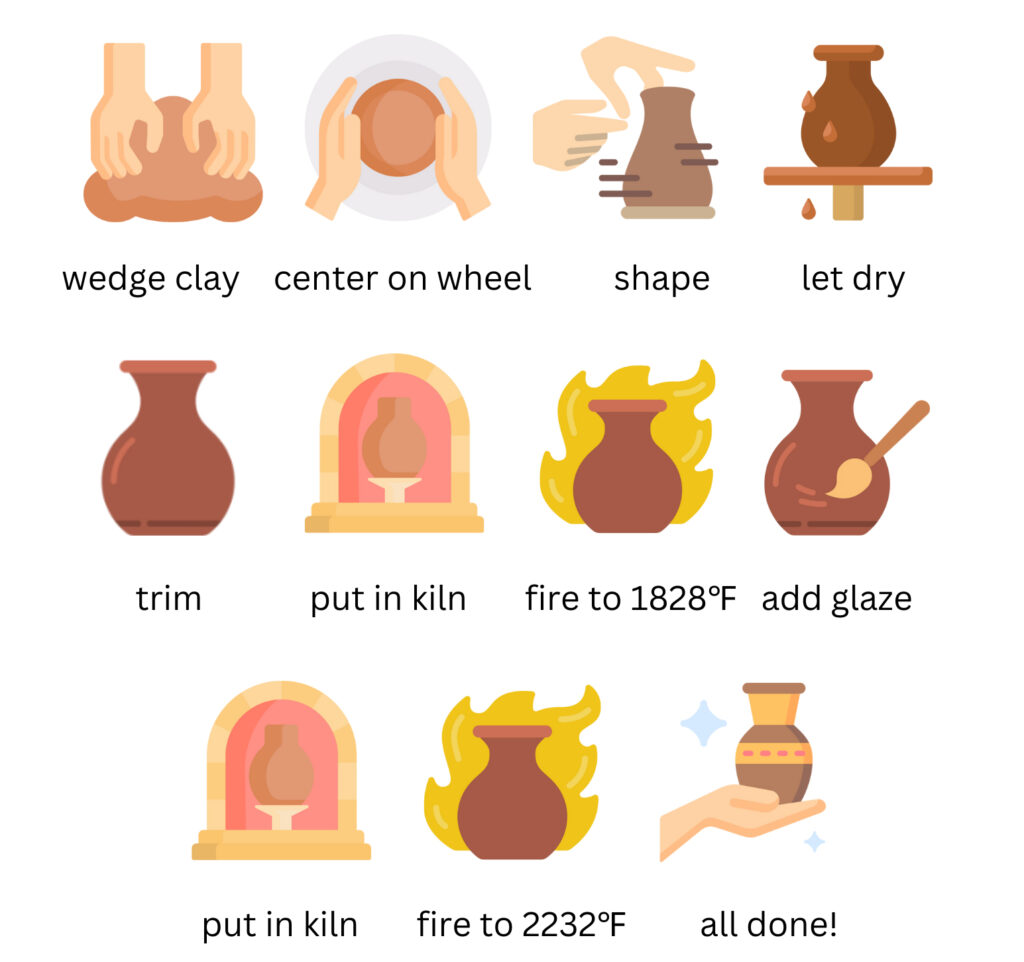
1. Selecting the Clay
The first step in pottery making is choosing the right type of clay. Clays vary in texture, color, and firing temperature. Potters select their clay based on the desired characteristics of the finished piece. Make Santa Fe has several clays for sale, but you can also bring your own, just as long as it’s a high-fire clay (^6).
2. Preparing the Clay
Once the clay is selected, it’s time to prepare it. This involves wedging, a process akin to kneading dough, to remove air bubbles and ensure consistency. There is a dedicated wedging table available for use in the studio. Please be sure to use the correct side of the table; one side is for white clays, the other for dark clays.
3. Shaping, Building, or Throwing
Three general categories to shaping clay are throwing, forming, or hand-building. Throwing is typically done on a pottery wheel. Forming can be done on the slab roller or extruder, or various tools can be used. Hand-building is the process of putting together different clay shapes to make a larger object.
It’s often preferable to let the piece dry into a leather-hard state during this process. This allows for more precise trimming or finishing.
4. Drying
After shaping, building, or throwing, the finished piece must be left to dry. Once the clay is dry, it is incredibly delicate. Drying can often take many days; during this time, it’s important to allow the work to dry slowly. Otherwise, cracks and splits might develop.
5. Bisque Firing
Once dry, the pottery undergoes the first firing, known as bisque firing. This process hardens the clay and prepares it for glazing. Make Santa Fe fires clay to ^04 for bisque. This is 1945 degrees Fahrenheit and takes about 6 hours.
6. Glazing
Glazing is the application of a glass-like coating that will be vitrified during the final firing. This stage is where potters can get creative with colors and textures.
7. Final Firing
The final firing, at a higher temperature than bisque, vitrifies the glaze and clay body, fusing them together. This process gives the pottery its strength and waterproof qualities. Make glaze (or final) fires at ^6, which is about 2200 degrees Fahrenheit.
8. The Finished Product
The end product is a unique piece of pottery, a blend of the potter’s skill and the unpredictable nature of the firing process. Each piece tells its own story, from the hands that shaped it to the elements that transformed it.
Conclusion
Pottery making is an art form that has survived and evolved over thousands of years. Each stage of crafting a piece of pottery is a testament to the potter’s skill, patience, and creativity. It’s a journey from earth to art, where each step is crucial in bringing the piece to life.
